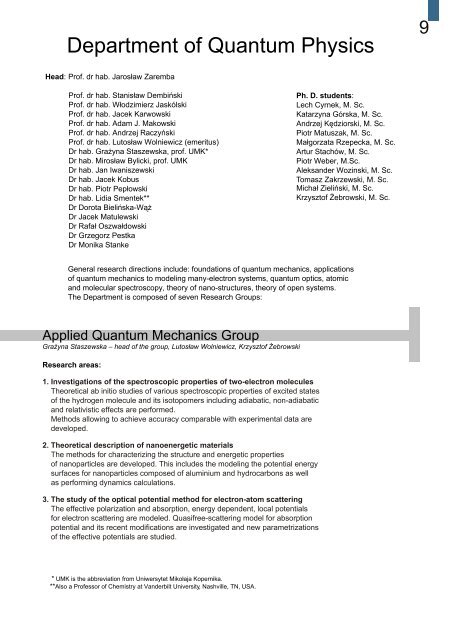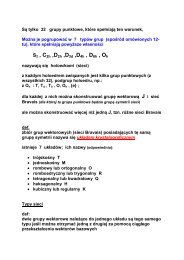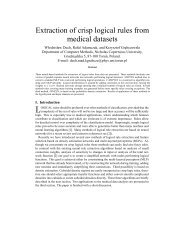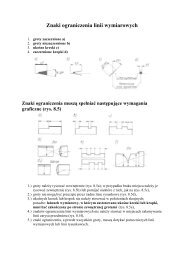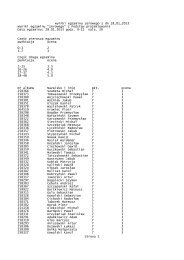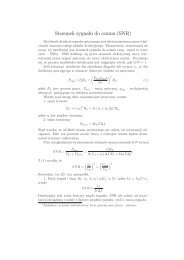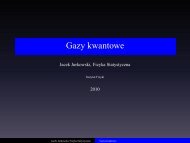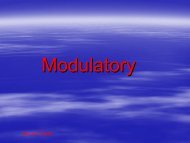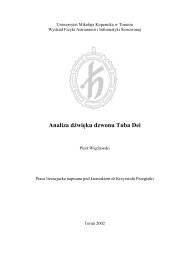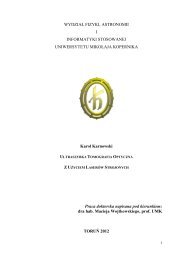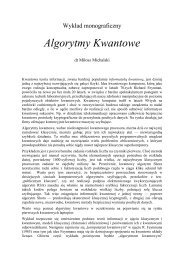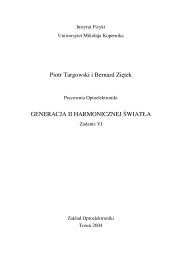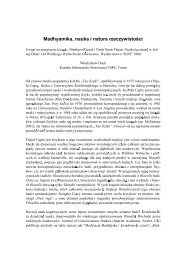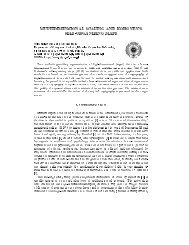Physics at Nicolaus Copernicus University
Physics at Nicolaus Copernicus University
Physics at Nicolaus Copernicus University
You also want an ePaper? Increase the reach of your titles
YUMPU automatically turns print PDFs into web optimized ePapers that Google loves.
Department of Quantum <strong>Physics</strong><br />
Head: Prof. dr hab. Jaros³aw Zaremba<br />
Prof. dr hab. Stanis³aw Dembiñski<br />
Prof. dr hab. W³odzimierz Jaskólski<br />
Prof. dr hab. Jacek Karwowski<br />
Prof. dr hab. Adam J. Makowski<br />
Prof. dr hab. Andrzej Raczyñski<br />
Prof. dr hab. Lutos³aw Wolniewicz (emeritus)<br />
Dr hab. Gra¿yna Staszewska, prof. UMK*<br />
Dr hab. Miros³aw Bylicki, prof. UMK<br />
Dr hab. Jan Iwaniszewski<br />
Dr hab. Jacek Kobus<br />
Dr hab. Piotr Pep³owski<br />
Dr hab. Lidia Smentek**<br />
Dr Dorota Bieliñska-W¹¿<br />
Dr Jacek M<strong>at</strong>ulewski<br />
Dr Rafa³ Oszwa³dowski<br />
Dr Grzegorz Pestka<br />
Dr Monika Stanke<br />
General research directions include: found<strong>at</strong>ions of quantum mechanics, applic<strong>at</strong>ions<br />
of quantum mechanics to modeling many-electron systems, quantum optics, <strong>at</strong>omic<br />
and molecular spectroscopy, theory of nano-structures, theory of open systems.<br />
The Department is composed of seven Research Groups:<br />
Applied Quantum Mechanics Group<br />
Gra¿yna Staszewska – head of the group, Lutos³aw Wolniewicz, Krzysztof ¯ebrowski<br />
Research areas:<br />
1. Investig<strong>at</strong>ions of the spectroscopic properties of two-electron molecules<br />
Theoretical ab initio studies of various spectroscopic properties of excited st<strong>at</strong>es<br />
of the hydrogen molecule and its isotopomers including adiab<strong>at</strong>ic, non-adiab<strong>at</strong>ic<br />
and rel<strong>at</strong>ivistic effects are performed.<br />
Methods allowing to achieve accuracy comparable with experimental d<strong>at</strong>a are<br />
developed.<br />
2. Theoretical description of nanoenergetic m<strong>at</strong>erials<br />
The methods for characterizing the structure and energetic properties<br />
of nanoparticles are developed. This includes the modeling the potential energy<br />
surfaces for nanoparticles composed of aluminium and hydrocarbons as well<br />
as performing dynamics calcul<strong>at</strong>ions.<br />
3. The study of the optical potential method for electron-<strong>at</strong>om sc<strong>at</strong>tering<br />
The effective polariz<strong>at</strong>ion and absorption, energy dependent, local potentials<br />
for electron sc<strong>at</strong>tering are modeled. Quasifree-sc<strong>at</strong>tering model for absorption<br />
potential and its recent modific<strong>at</strong>ions are investig<strong>at</strong>ed and new parametriz<strong>at</strong>ions<br />
of the effective potentials are studied.<br />
* UMK is the abbrevi<strong>at</strong>ion from Uniwersytet Miko³aja Kopernika.<br />
**Also a Professor of Chemistry <strong>at</strong> Vanderbilt <strong>University</strong>, Nashville, TN, USA.<br />
Ph. D. students:<br />
Lech Cyrnek, M. Sc.<br />
K<strong>at</strong>arzyna Górska, M. Sc.<br />
Andrzej Kêdziorski, M. Sc.<br />
Piotr M<strong>at</strong>uszak, M. Sc.<br />
Ma³gorz<strong>at</strong>a Rzepecka, M. Sc.<br />
Artur Stachów, M. Sc.<br />
Piotr Weber, M.Sc.<br />
Aleksander Wozinski, M. Sc.<br />
Tomasz Zakrzewski, M. Sc.<br />
Micha³ Zieliñski, M. Sc.<br />
Krzysztof ¯ebrowski, M. Sc.<br />
9


